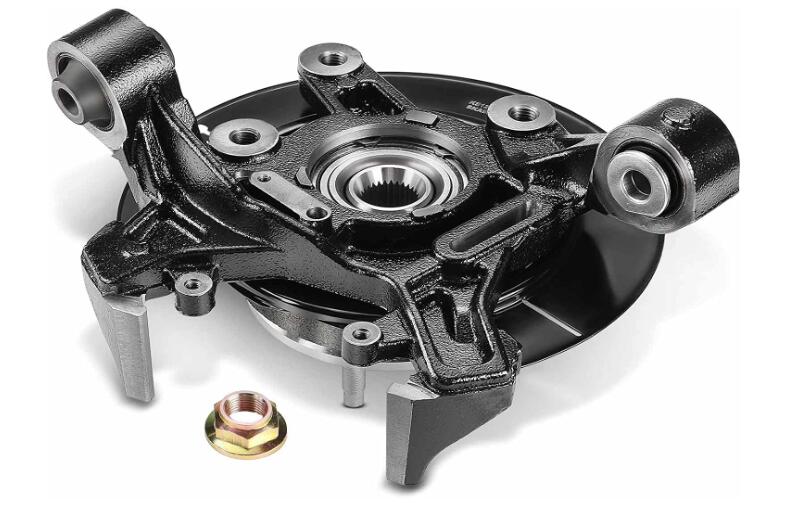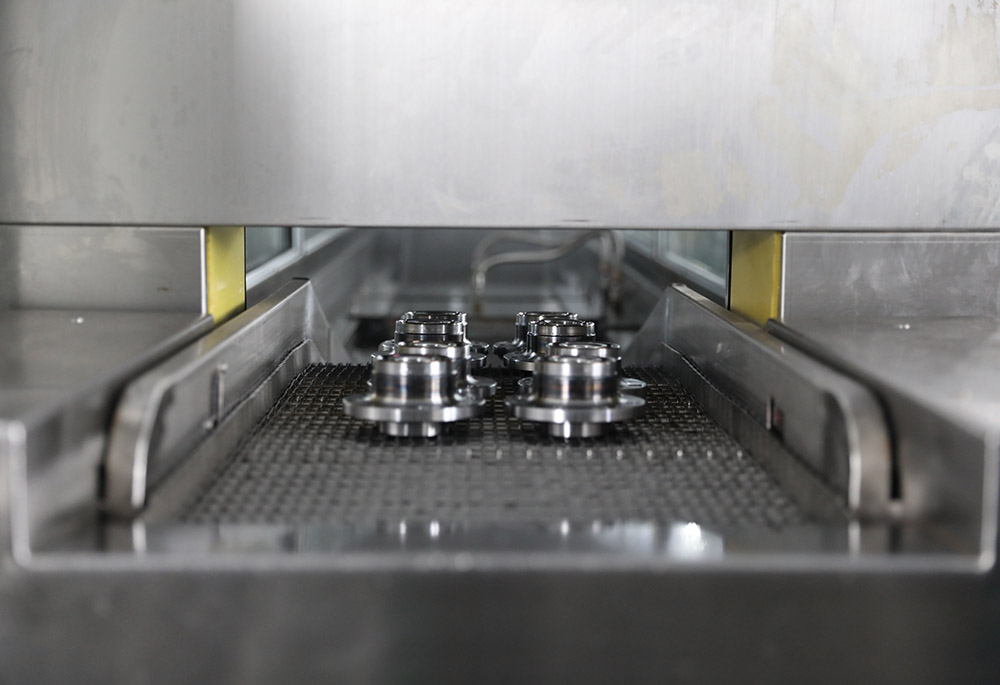Introduction:
In the rapidly evolving landscape of the automotive industry, the shift from traditional fuel-powered vehicles to electric vehicles (EVs) is creating waves of change, reaching even the most minor components of vehicles.
While some parts remain unaffected, others are adapting to meet the unique requirements of electric vehicles.
One such component is the humble wheel hub, a pivotal part of the vehicle’s assembly.
This blog post will explore the considerations that could influence wheel hub design and selection in fuel-powered vehicles versus electric vehicles.
1. Weight: Bearing the Load
Weight is one of the primary characteristics distinguishing electric vehicles from their fuel-powered counterparts.
EVs are generally heavier due to the substantial weight of battery packs, which are the heart of an EV’s power system.
This extra weight can stress the wheel hubs and related suspension components.
Therefore, wheel hubs on electric vehicles must be robust enough to handle these increased loads without compromising performance or safety.
Conversely, fuel-powered vehicles usually weigh less without the hefty battery packs.
Thus, their wheel hubs don’t have to withstand the same load levels as in EVs.
However, they must still be sufficiently strong to endure the vehicle’s weight and dynamic forces during operation.
2. Torque: Handling the Power
How power is delivered in electric vehicles differs significantly from traditional fuel-powered vehicles.
Electric motors can generate an immense amount of torque almost instantly, a feature that gives EVs their renowned quick acceleration.
The wheel hubs in EVs need to cope with this high torque to ensure seamless power transmission from the motor to the wheels.
Consequently, EV wheel hubs require design modifications or materials to withstand these higher loads without deformation or failure.
On the other hand, fuel-powered vehicles generate torque through internal combustion engines.
This torque is gradually transmitted to the wheels, placing a different type of stress on the wheel hubs.
While these hubs still need to be sturdy, they are typically designed with this more gradual power delivery in mind.
3. Regenerative Braking: An Electric Advantage
Regenerative braking is a distinguishing feature of electric vehicles.
It allows EVs to recover and store energy during braking, which would otherwise be lost as heat in traditional braking systems.
Although this system doesn’t directly impact the design of the wheel hub, it does influence the overall braking system design.
This could indirectly affect wheel hub design, particularly in integrating the braking system components and the hub assembly.
Fuel-powered vehicles typically use conventional braking systems that don’t have this consideration.
Their wheel hubs are designed to accommodate standard disc or drum brakes without requiring regenerative braking technology.
4. Noise: The Quiet Revolution
One of the hallmarks of electric vehicles is their quiet operation.
Without the noise of an internal combustion engine, other sounds – such as the hum of the tires on the road, the wind rushing past, and even the whirring of the wheel hubs – can become more noticeable.
As a result, manufacturers of EV wheel hubs may need to prioritize minimizing operational noise.
This could involve precise engineering and machining processes to ensure the wheel hub and bearings operate as quietly as possible.
Conversely, in fuel-powered vehicles, the noise from the engine and exhaust often drowns out the operational noise from the wheel hubs.
As such, while noise reduction is still a consideration in the design of wheel hubs for fuel-powered vehicles, it may not be as high a priority as in EVs.
5. Aerodynamics and Efficiency: Every Bit Counts
Maximizing range is a crucial goal for electric vehicles, and every bit of efficiency counts.
One factor that can influence a vehicle’s aerodynamic efficiency is the design of the wheels, including the wheel hubs.
While the influence of the wheel hub design on overall vehicle aerodynamics is relatively minor compared to the wheel and body design, it could still be a factor.
As such, EV wheel hubs might be designed with aerodynamics in mind, employing streamlined shapes and designs that minimize air resistance.
Fuel-powered vehicles, although they also benefit from improved aerodynamics, are less dependent on efficiency for range.
Therefore, while aerodynamics can play a role in the design of wheel hubs for fuel-powered vehicles, it may not be as crucial as in the case of EVs.
6. Material Considerations: Strength vs. Weight
The material choice for wheel hubs can significantly influence their performance, cost, and weight.
While the same range of materials is generally available for fuel-powered and electric vehicles, the selection criteria can differ due to their distinct characteristics.
Materials that provide the necessary strength and durability while minimizing weight are often prioritized for electric vehicles.
This is to counteract the battery pack’s increased weight and improve efficiency.
For this reason, materials like high-strength steel, certain alloys, or even carbon composites could be employed in constructing EV wheel hubs.
In contrast, while weight is also a consideration for fuel-powered vehicles, it may be less critical.
Thus, more cost-effective materials like cast iron or standard steel alloys might be more commonly used in their wheel hubs.
7. Design Adaptability: Matching the Vehicle’s Needs
The wheel hub design can adapt to the needs of the vehicle it serves.
This adaptability is true for electric and fuel-powered vehicles, but the specific requirements can differ.
For instance, some electric vehicles may incorporate larger motors or braking components within the wheel hub, often as part of in-wheel motor designs or advanced braking systems.
Such requirements would necessitate wheel hub designs that accommodate these components without compromising function or safety.
On the other hand, fuel-powered vehicles usually follow a more conventional layout for power transmission and braking components.
Therefore, their wheel hubs might not need to accommodate as many variables in the design.
8. Manufacturing Processes: Traditional vs. Innovative
The manufacturing processes used for wheel hubs in electric and fuel-powered vehicles can greatly influence their durability, performance, and cost.
Traditional methods such as casting and forging are widely used across both types of vehicles due to their proven reliability and efficiency.
However, the rapid evolution of EV technology might necessitate innovative manufacturing approaches.
With the emphasis on lightweight and high-strength components in EVs, processes like powder metallurgy, which allows for creating parts with complex shapes and high precision, may become more prevalent.
In addition, as EVs push towards more integrated designs, additive manufacturing (3D printing) could produce wheel hubs with complex geometries or integrated features.
Conversely, for fuel-powered vehicles, the established manufacturing processes like casting and forging continue to be reliable and cost-effective solutions, offering a good balance between performance, durability, and cost.
9. Sustainability: A Key Consideration
As we move towards more sustainable modes of transport, the sustainability of components like wheel hubs must be considered.
This aspect is especially important for electric vehicles, which are often marketed with an emphasis on environmental friendliness.
Sustainable manufacturing processes that reduce waste, use less energy, or involve recyclable materials could be more prevalent in producing EV wheel hubs.
Similarly, end-of-life considerations, including ease of disassembly and recyclability of the wheel hub, could also factor into their design.
For fuel-powered vehicles, while sustainability is also a concern, the emphasis might be less due to the overall environmental impact of these vehicles.
Nevertheless, sustainable manufacturing and end-of-life disposal practices are beneficial across all types of vehicles.
Conclusion: Spinning Towards the Future
The wheel hub plays a small yet vital role in the grand scheme of automotive evolution.
Whether part of a fuel-powered or electric vehicle, it is a testament to our progress in engineering and technology.
By adapting to the unique requirements of electric vehicles, wheel hubs are joining the broader transition towards a more sustainable, efficient, and innovative future of mobility.
This journey reminds us that every component, no matter how small, has a part to play in shaping the future of transportation.




